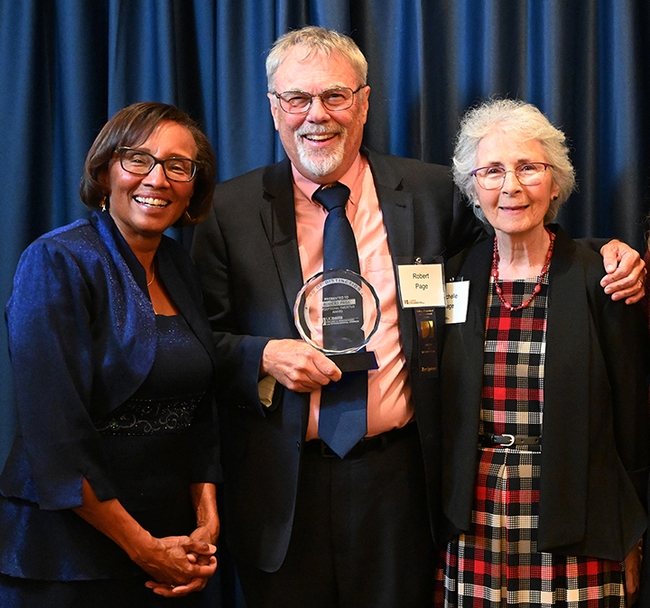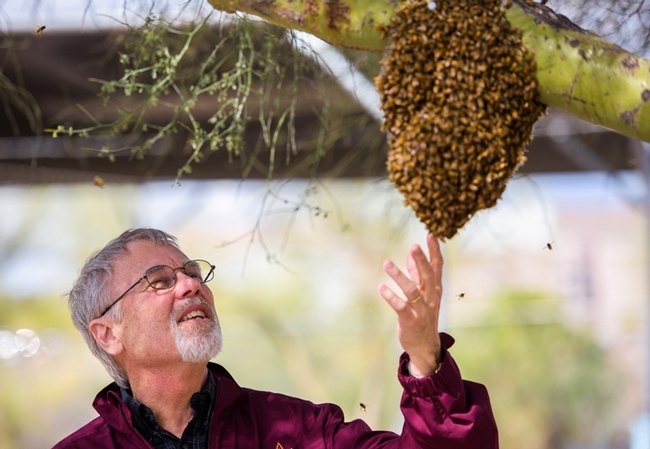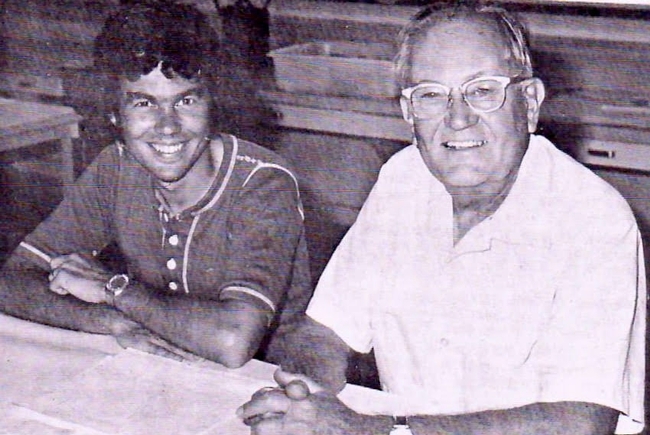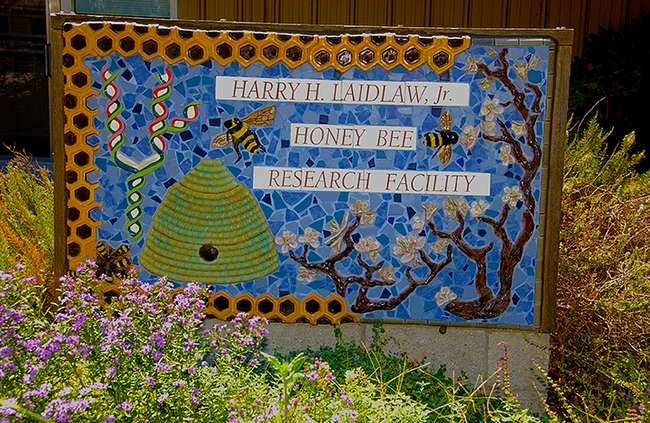- Author: Kathy Keatley Garvey
Thought for the day...
Every time we see a honey bee "posing perfectly" on a Gaillardia, commonly known as blanket flower, we think of a quote by internationally known honey bee geneticist, Robert E. Page Jr., a UC Davis doctoral alumnus and professor and chair emeritus of the UC Davis Department of Entomology (now the Department of Entomology and Nematology):
"The impact of bees on our world is immeasurable. Bees are responsible for the evolution of the vast array of brightly-colored flowers and for engineering the niches of multitudes of plants, animals, and microbes. They've painted our landscapes with flowers through their pollination activities and have evolved the most complex societies to aid their exploitation of the environment."
That's a passage from his book, The Art of the Bee.It's also featured on his YouTube Channel, https://www.youtube.com/@artofthebee.
Rob obtained his doctorate in entomology in 1980 from UC Davis; joined the UC Davis faculty in 1989; and chaired the Department of Entomology from 1999 to 2004. After retiring from UC Davis in 2004, he accepted an appointment at Arizona State University (ASU) as founding director of the School of Life Sciences. He served as dean of the College of Liberal Arts and Sciences, 2011-2013, and provost of ASU from 2013-2015. He is now emeritus. He was recently featured in Legends, American Entomologist. (See UC Davis Department of Entomology website)
Why did Page create the free and accessible-to-all YouTube Channel? Because that's what Alexander von Humboldt (1769-1859), known as a German geographer, naturalist, explorer, and proponent of Romantic philosophy and science, would have done.
It's about making science understandable.
Check out Page's YouTube channel, including:
- Landscape Artists
- Environmental Engineers
- The Social Contract
- Superorganisms
- How to Make a Superorganism
- Song of the Queen
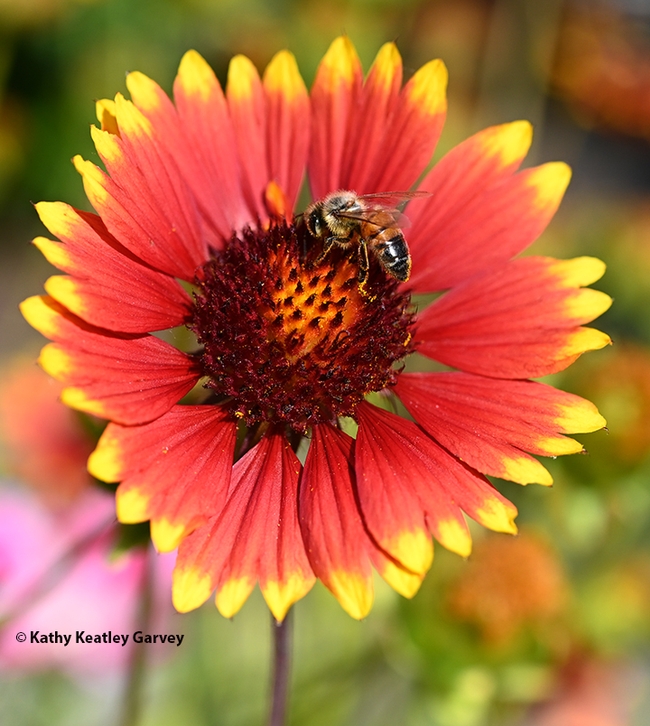
- Author: Kathy Keatley Garvey
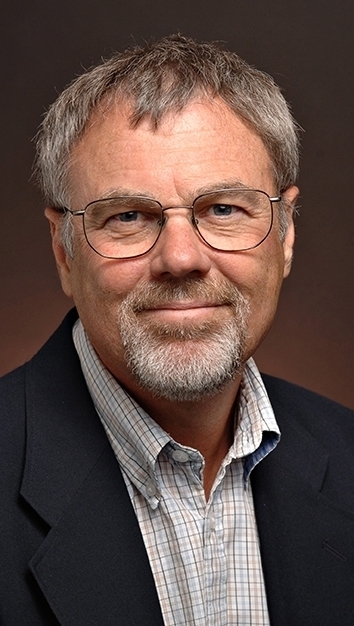
Titled "Robert E. Page, Jr.: The Spirit of the Bee," it's a great article chronicling his life, his love of bees, and his massive number of achievements. Rice captured it well.
Rob, a native of Bakersfield and now 74, received his doctorate in 1980 from UC Davis, studying with major professor Norman Gary and doctoral research mentor Harry H. Laidlaw Jr. He advanced to professor and chair of the Department of Entomology (now the Department of Entomology and Nematology). A second career emerged when Arizona State University (ASU) recruited him.
Today Page holds the titles of ASU University Provost Emeritus and Regents Professor Emeritus as well as UC Davis Distinguished Emeritus Professor and Emeritus Chair of the UC Davis Entomology Department.
Page is known for his research on honey bee behavior and population genetics, particularly the evolution of complex social behavior. One of his most salient contributions to science was to construct the first genomic map of the honey bee, which sparked a variety of pioneering contributions not only to insect biology but to genetics at large.
Page pioneered the use of modern techniques to study the genetic basis of social behavior evolution in honey bees and other social insects. He was the first to employ molecular markers to study polyandry and patterns of sperm use in honey bees. He provided the first quantitative demonstration of low genetic relatedness in a highly eusocial species.
He is "arguably the most influential honey bee biologist of the past 30 years," his peers say.
At UC Davis, Page worked closely with Laidlaw. Together they published many significant research papers and the landmark book, “Queen Rearing and Bee Breeding” (Wicwas Press, 1998), considered the most important resource book for honey bee genetics, breeding, and queen rearing.
For 24 years, from 1989 to 2015, Page maintained a UC Davis honey bee-breeding program, managed by bee breeder-geneticist Kim Fondrk. Their contributions include discovering a link between social behavior and maternal traits in bees. Their work was featured in a cover story in the journal Nature. In all, Nature featured his work on four covers from work mostly done at UC Davis.
Page authored two books: The Spirit of the Hive: The Mechanisms of Social Evolution (Harvard University Press, 2013) and the Art of the Bee: Shaping the Environment from Landscapes to Societies (Oxford University Press, 2020). In 2023, he launched a publicly accessible YouTube Channel, https://youtube.com/@artofthebee.
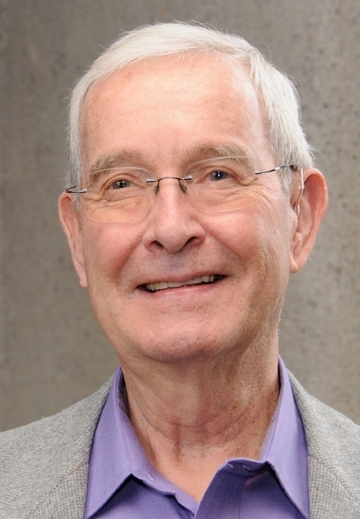
When Rice asked Page "Who was the most influential person in your education," Page replied: "Today, all my research approaches, the way I thought about things, everything I did I can point back to four people. Norm Gary taught me the importance of knowing behavior and having good behavioral assays. He was superb at it. Nobody knows better what bees will do than Norm Gary, but he doesn't care much about why they do it. Which then brings me to my training in evolution from Tim Prout, who was an evolutionary biologist and population geneticist. He taught me population genetics, which I use to develop a population way of thinking about the work that I do. Harry Laidlaw taught me the value of breeding and the value of attention to detail. When we wrote papers together, we went over every word. Harry believed that every word had to be there for a reason. Every word had to be right. Robert A. Metcalf, an incredible guy, really turned me on to social insects, and got me interested in using molecular and biochemical markers. Everything I did for the rest of my career came from those four people."
This week we asked Gary, now 90, what it was like to have Rob as his graduate student.
In a June 17th email, Gary wrote: “When I first met Rob Page at the beginning of his graduate studies, I was immediately impressed that he was a very exceptional student in all respects! He was enthusiastic about insect behavior, especially honey bee behavior. I became his major professor. His fascination with behavior soon evolved into behavioral genetics. Consequently, I encouraged him to conduct his graduate research under the direction of Harry Laidlaw whose research program focused on honey bee genetics."
"Rob and I shared several bee research projects, one of which involved research on honey bees to determine if insects would be adversely affected by exposure to microwaves from solar power satellites that were under consideration as a future source of energy for mankind. Rob excelled in all activities. His enthusiasm was contagious! He richly deserves the many rewards he has received during his career, especially for his superior skills in research, teaching, and leadership in every facet of the academic world.”
You may know Norm Gary as not only a professor, scientist, musician, and author but one of the world's most incredible professional bee wranglers. He used to wear full-body bee suits and play the b-flat clarinet. (See Bug Squad blog of Nov. 30, 2016). He once trained bees to fly into his mouth to collect food from a small sponge saturated with his patented artificial nectar. He holds the Guinness World record (109 bees inside his closed mouth for 10 seconds) for the stunt.
It's all about The Bees for Rob Page and Norm Gary.
It's always been about The Bees.

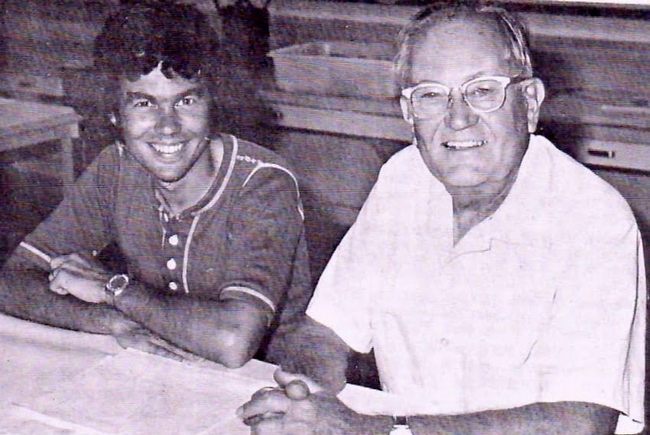
- Author: Kathy Keatley Garvey
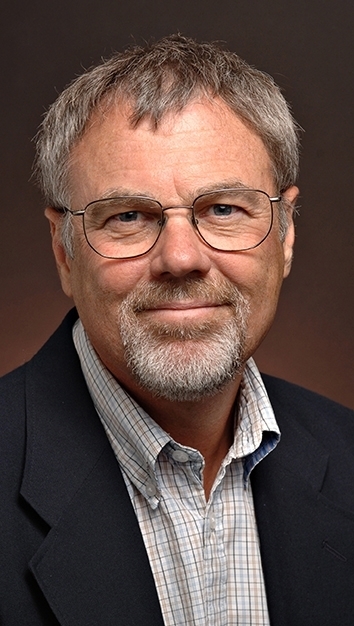
Page, a UC Davis doctoral alumnus, a UC Davis distinguished emeritus professor and former chair of the UC Davis Department of Entomology, wrote an article The Art of the Bee for the journal, and editor Robert Brodschneider interviewed him in a piece titled Robert E. Page Jr--Mapper of the Genetic Architecture of the Honey Bee.
Rob lives and breathes bees, UC Davis, and Arizona State University (ASU). He obtained his doctorate in entomology in 1980 from UC Davis; joined the UC Davis faculty in 1989; and chaired the Department of Entomology from 1999 to 2004. After retiring from UC Davis in 2004, he accepted an appointment at ASU as founding director of the School of Life Sciences. He served as provost of ASU from 2013- 2015, and dean of the College of Liberal Arts and Sciences, 2011-2013.
His research on honey bee behavior and genetics appears in his publications: Queen Rearing and Bee Breeding (1997, with Harry H. Laidlaw Jr., his major professor at UC Davis and "the father of honey bee genetics"); The Spirit of the Hive, Harvard University Press (2013); and The Art of the Bee, Oxford University Press (2020). His 230-plus research papers have been cited more than 20,000 times.
Much of Rob Page's research occurred at UC Davis. For 24 years, from 1989 to 2015, he maintained a honey bee-breeding program, managed by bee breeder-geneticist Kim Fondrk, at the Harry H. Laidlaw Jr. Honey Bee Research Facility on Bee Biology Road, west of the central campus. Their contributions include discovering a link between social behavior and maternal traits in bees. Their work was featured in a cover story in the journal Nature. In all, Nature featured his work on four covers from work mostly done at UC Davis.
Looking to learn more about bees? You'll want to pick up a copy of his book, ;The Art of the Bee: Shaping the Environment from Landscapes to Societies, 2020, Oxford University Press), and/or access his newly created free YouTube channel, The Art of the Bee," at https://www.youtube.com/@artofthebee.
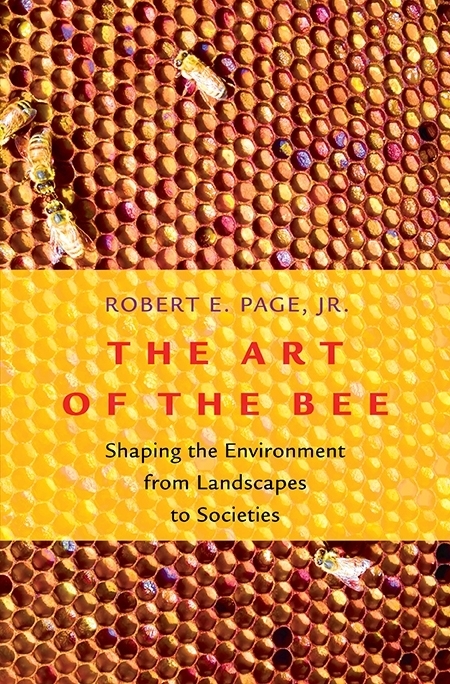
Why did Page create the free and accessible-to-all YouTube Channel? Because that's what Alexander von Humboldt (1769-1859), known as a German geographer, naturalist, explorer, and proponent of Romantic philosophy and science, would have done.
It's about making science understandable.
"Von Humboldt appealed to artists to learn about nature, and ecology, and paint it," Page wrote in the Bee World article. "He believed that artists and writers could do more to advance an understanding of science and nature than the scientific specialist. His plea was for making science understandable to the public, a plea for popular science."
Page's YouTube channel guides the viewer through "the fascinating biology and behavior of the bee," presented in 38 videos ranging from 4 to 27 minutes in length. He organized the videos into six segments that roughly correspond to the nine chapters of the book:
- Landscape Artists
- Environmental Engineers
- The Social Contract
- Superorganisms
- How to Make a Superorganism
- Song of the Queen.
We love this passage from his book:
"The impact of bees on our world is immeasurable. Bees are responsible for the evolution of the vast array of brightly-colored flowers and for engineering the niches of multitudes of plants, animals, and microbes. They've painted our landscapes with flowers through their pollination activities and have evolved the most complex societies to aid their exploitation of the environment."
We can learn so much from the bees...
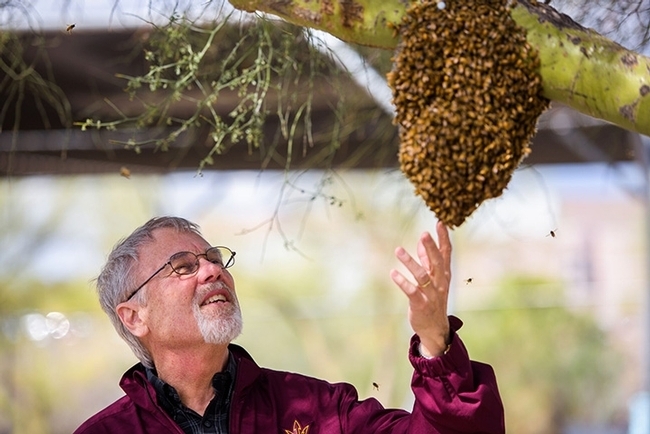
- Author: Kathy Keatley Garvey
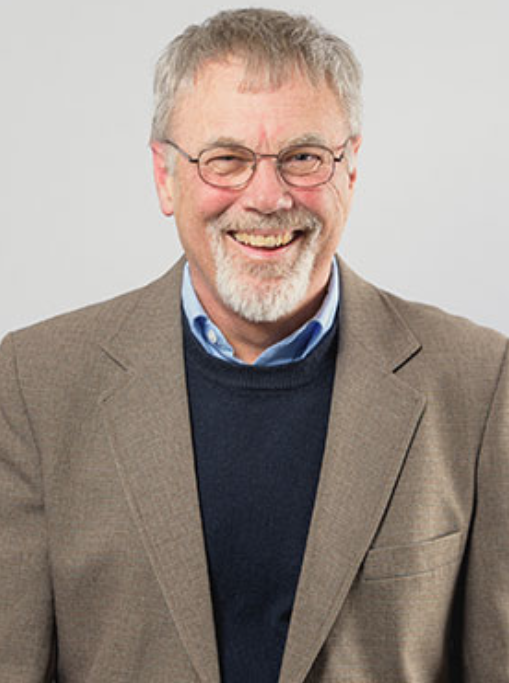
The link: https://youtube.com/@artofthebee
Just call it "the fascinating world of bees!"
The content is from his book, The Art of the Bee: Shaping the Environment from Landscapes to Societies, (Oxford University Press, 2020).
"The impact of bees on our planet is immeasurable," he says. "Bees are responsible for the evolution of the vast array of brightly-coloured flowers and for engineering the niches of multitudes of plants, animals, and microbes. They've painted our landscapes with flowers through their pollination activities and have evolved the most complex societies to build and exploit the environment. The biology of the honey bee is one that reflects their role in transforming environments with their anatomical adaptations and a complex language that together function to harvest floral resources. A social system that includes a division of labor builds, defends, and provisions nests containing tens of thousands of individuals, only one of whom reproduces."
"This YouTube channel series presents fundamental biology, not in organizational layers, but wrapped around interesting themes and concepts, and in ways designed to explore and understand each concept," explained Page, who retired in 2019. "It examines the co-evolution of bees and flowering plants, bees as engineers of the environment, the evolution of sociality, the honey bee as a superorganism and how it evolves, and the mating behavior of the queen."
The content is divided into six segments:
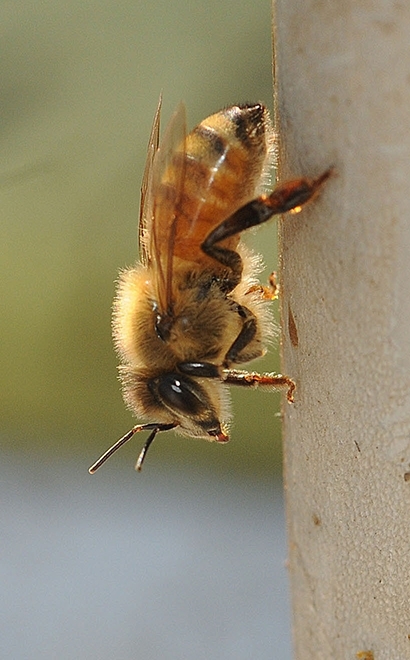
Episode 1: “Darwin's Abominable Mystery”
Episode 2: “Floral Adaptations”
Episode 3: “Adaptations of Bees”
Episode 4: “Dance Language”
Episode 5: “Navigation”
Episode 6: “Time Scales of Change”
Environmental Engineers:
Episode 1: “Environmental Engineering”
Episode 2: “Niche Construction”
Episode 3: “Nest Defense in Niche Construction”
The Social Contract:
Episode 1: “Political Philosophy of Bees Social Contract”
Episode 2: “Complex Social Structures”
Episode 3: “Power and Will of Social Insects”
Episode 4: “Evolution of Altruism in Bees”
Episode 5: “Public Health and Bees”
Episode 6: “Honey Bee Public Works, Welfare Immigration”
Superorganisms:
Episode 1: “What Is a Superorganism?”
Episode 2: “Reproduction, Protection and Nutrition”
Episode 3: “Biogenic Law and Baers Law”
Episode 4: “Germ Plasm Theory”
Episode 5: “A Metaphor or an Entity”
How to Make a Superorganism:
Episode 1: “The Spirit of the Hive”
Episode 2: “Division of Labor”
Episode 3: “Colony Level Selection”
Episode 4: “Phenotypic Architecture”
Episode 5: “Phenotypic and Genetic Architectures”
Episode 6: “Bee Development”
Song of the Queen:
Episode 1: “Natural History and Castes”
Episode 2: “The Song Begins: Making a New Queen”
Episode 3: “Conditions that Stimulate Queen Rearing”
Episode 4: “Where Do Queens Mate?”
Episode 5: “How Do Queens Mate? How Many Times?”
Episode 6: “Polyandry and Sperm Use”
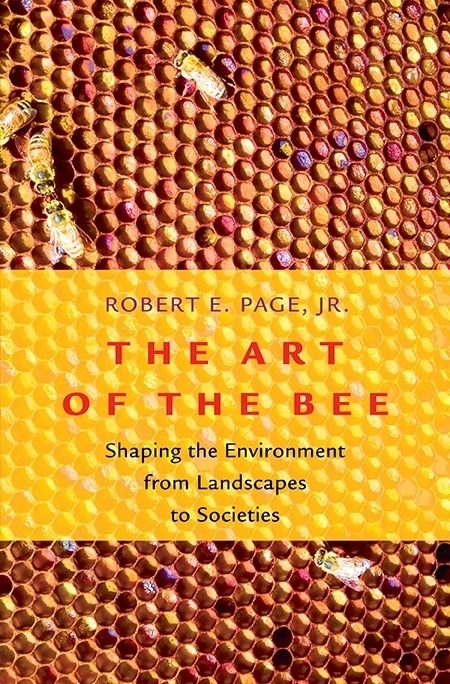
Page joined Arizona State University in 2004, after retiring as Professor Emeritus and Chair Emeritus, UC Davis Department of Entomology, to be founding director of the School of Life Sciences. He served as provost of Arizona State University (2013- 2015) and dean of the College of Liberal Arts and Sciences (2011-2013). His research on honey bee behavior and genetics appears in his publications Queen Rearing and Bee Breeding (1997, with Harry H. Laidlaw Jr. , his major professor at UC Davis and "the father of honey bee genetics"); The Spirit of the Hive, Harvard University Press (2013); and The Art of the Bee, Oxford University Press (2020). His 230-plus research papers have been cited more than 20,000 times.
Much of his research occurred at UC Davis. For 24 years, from 1989 to 2015, Page maintained a honey bee-breeding program, managed by bee breeder-geneticist Kim Fondrk. Their contributions include discovering a link between social behavior and maternal traits in bees. Their work was featured in a cover story in the journal Nature. In all, Nature featured his work on four covers from work mostly done at UC Davis.
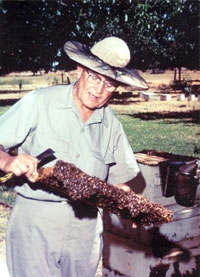
Page's UC Davis honors include:
- Thomas and Nina Leigh Distinguished Alumni Award (2018) from UC Davis Department of Entomology and Nematology
- UC Davis Distinguished Emeritus Professor (2019), one awarded annually, UC Davis Emeriti Association
- Exceptional Emeriti Faculty Award (2022), UC Davis College of Agricultural and Environmental Sciences
He most recently won the 2023 C. W. Woodworth Award, the highest honor that the Pacific Branch of ESA offers. “Dr. Page is a pioneering researcher in the field of evolutionary genetics and social behavior of honey bees, and a highly respected and quoted author, teacher and former administrator,” wrote nominator Steve Nadler, professor and chair of the UC Davis Department of Entomology and Nematology. Page is the 12th UC Davis recipient of the award, first presented in 1969. Laidlaw won the award in 1981. (See news story)
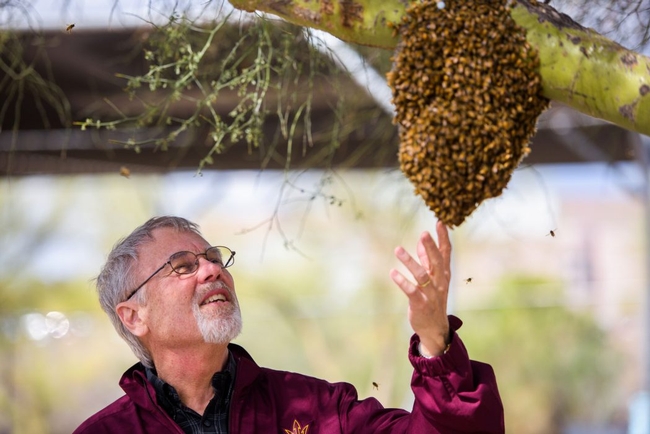
- Author: Kathy Keatley Garvey
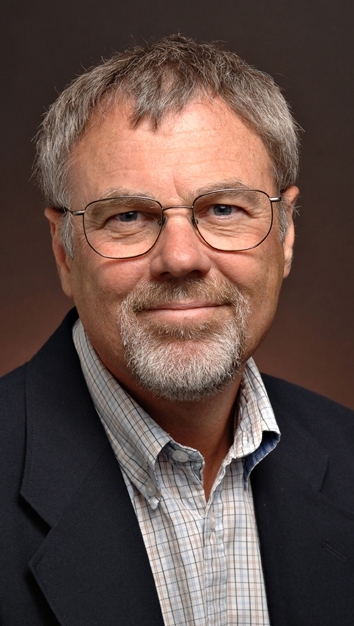
She--and any others near them--will smile every time!
Fact is, Rob Page is our favorite honey bee geneticist, and he was just named the recipient of the 2023 C. W. Woodworth Award, the highest honor accorded by the Pacific Branch, Entomological Society of America (PBESA).
It's an honor well deserved. And a honey of an award.
“Dr. Page is a pioneering researcher in the field of evolutionary genetics and social behavior of honey bees, and a highly respected and quoted author, teacher and former administrator,” wrote nominator Steve Nadler, professor and chair of the UC Davis Department of Entomology and Nematology.
Page is the 12th UC Davis recipient of the award, first presented in 1969. His mentor, and later colleague, Harry H. Laidlaw Jr. (for whom the UC Davis bee biology research facility is named), won the award in 1981.
The PBESA awards ceremony will take place at its meeting, April 2-5, in Seattle. The organization encompasses 11 Western states, and parts of Canada, Mexico and U.S. territories.
“One of Dr. Page's most salient contributions to science was to construct the first genomic map of the honey bee, which sparked a variety of pioneering contributions not only to insect biology but to genetics at large,” Nadler related. “It was the first genetic map of any social insect. He was the first to demonstrate that a significant amount of observed behavioral variation among honey bee workers is due to genotypic variation. In the 1990s, he and his students and colleagues isolated, characterized and validated the complementary sex determination gene of the honey bee; considered the most important paper yet published about the genetics of Hymenoptera. The journal Cell featured their work on its cover. In subsequent studies, he and his team published further research into the regulation of honey bee foraging, defensive and alarm behavior.”

Page's career at ASU led to a series of top-level administrative roles: founding director, School of Life Sciences (2004-2010), vice provost and dean, College of Liberal Arts and Sciences (2011-2013) and university provost, 2014-2015.
Nadler praised Page's strategic vision, his leadership and his contributions to science. He built two modern apicultural labs (in Ohio and Arizona), major legacies that are centers of honey bee research and training. The Social Insect Research Group (SIRG) at ASU is regarded as “the best in the world,” according to the late E. O. Wilson. ASU Professor Bert Hoelldobler, in an ASU news release, declared Dr. Page as "the leading honey bee geneticist in the world. A number of now well-known scientists in the U.S. and Europe learned the ropes of sociogenetics in Rob's laboratory.”
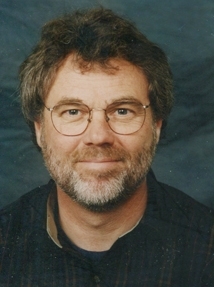
While at UC Davis, Page worked closely with Harry H. Laidlaw Jr., the father of honey bee genetics, and together they published many significant research papers and the landmark book, “Queen Rearing and Bee Breeding” (Wicwas Press, 1998). It is considered the most important resource book for honey bee genetics, breeding, and queen rearing. Page is now in the process of updating it.
For 24 years, from 1989 to 2015, Page maintained a honey bee-breeding program, managed by bee breeder-geneticist Kim Fondrk. Their contributions include discovering a link between social behavior and maternal traits in bees. Their work was featured in a cover story in the journal Nature. In all, Nature featured his work on four covers from work mostly done at UC Davis.
A 2012 Fellow of the Entomological Society of America, Page has held national and international offices. He served as secretary, chair-elect, chair, subsection cb (apiculture and social insects) of ESA from 1986-1989; president of the North American Section, International Union for the Study of Social Insects, 1991; and a Council member, International Bee Research Association, 1995-2000.
Among his many honors:
- Fellow of the American Association for the Advancement of Science
- Awardee of the Alexander von Humboldt Senior Scientist Award (the Humboldt Prize - the highest honor given by the German government to foreign scientists)
- Foreign Member of the Brazilian Academy of Sciences
- Fellow of the American Academy of Arts and Sciences
- Elected to the Leopoldina - the German National Academy of Sciences (the longest continuing academy in the world)
- Fellow of the Wissenschaftskolleg zu Berlin
- Fellow of the Entomological Society of America
- Awardee of the Carl Friedrich von Siemens Fellowship
- Fellow of the California Academy of Sciences
- Fellow, Carl Friedrich von Siemens Foundation, Munich, Germany, September 2017-August
- Thomas and Nina Leigh Distinguished Alumni Award from UC Davis Department of Entomology and Nematology
- James Creasman Award of Excellence (ASU Alumni Association)
- UC Davis Distinguished Emeritus Professor, one awarded annually
- Distinguished Emeritus Award, College of Agricultural and Environmental Sciences, one awarded annually
In his letter of support, colleague and research collaborator James R. Carey, distinguished professor of entomology at UC Davis, described Page as "one of the most gifted scientists, administrators, and teachers I have had the privilege to know in my 42 years in academia.”
Bee breeder-geneticist Susan Cobey of Washington State University, former manager of the Laidlaw facility, emphasized Page's importance to the bee breeding and beekeeping industry. Cobey, who has based her career on the Page-Laidlaw Closed Population Breeding, wrote that: “The beauty of this system is that it is practical and addresses the unique challenges of honey bee stock improvement. Queens mate in flight with numerous drones and selection is based upon complex behaviors at the colony level, influenced by the environmental. Hence, traditional animal breeding models do not apply well to honey bees.”
Nadler also noted that “Dr. Page was involved in genome mappings of bumble bees, parasitic wasps and two species of ants. His most recent work focuses on the genetic bases of individuality in honey bees; demonstrating genetic links between pollen and nectar collection, tactile and olfactory learning characteristics, and neuroendocrine function. This work provides the most detailed understanding to date of the molecular and genetic bases to task variation in a social insect colony.”
Nadler added: "Not surprisingly, Dr. Page humbly considers his most far-reaching and important accomplishment, the success of his mentees, including at least 25 graduate students and postdocs who are now faculty members at leading research institutions around the world."
Charles William Woodworth (1865-1940), is considered the founder of both the UC Berkeley and UC Davis departments of entomology. William Harry Lange Jr., (1912-2004) was the first UC Davis recipient of the Woodworth award (1978). Other recipients: Harry Laidlaw Jr., (1907-2003), 1981; Robert Washino, 1987; Thomas Leigh (1923-1993), 1991; Harry Kaya, 1998; Charles Summers, (1941-2021), 2009; Walter Leal, 2010; Frank Zalom, 2011; James R. Carey, 2014; Thomas Scott, 2015; and Lynn Kimsey, 2020.
Joining Rob Page in the 2023 PBESA winners' circle from UC Davis: community ecologist Louie Yang, professor, UC Davis Department of Entomology and Nematology, recipient of the Distinction in Student Mentoring Award; and UC Davis student Gary Ge, of the UC Davis Research Scholars Program in Insect Biology, who won the second annual Dr. Stephen Garczynski Undergraduate Research Scholarship.
The complete list of this year's PBESA recipients is posted here.
